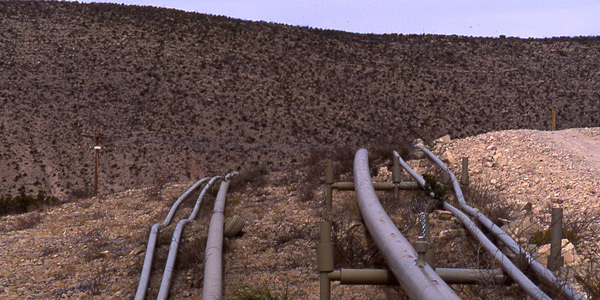By Jason Fordney
Planned additions of renewable generation and storage will not compensate for gas retirements in the Western Interconnection, and any major disruption to gas supply would push the system “to the limit,” a new reliability assessment says.
Analysis by the Western Electricity Coordinating Council showed that reserve margins are projected to be tight through 2026, driven by coal and nuclear retirements and increases in power demand. The report forecasts 30% growth in natural gas demand across the interconnection. WECC retained Wood Mackenzie, Environmental Economics and Argonne National Laboratory to undertake the gas-electric interface study.
“We are now effectively in an N-1 scenario with any major disruptions in the gas transmission system or the Bulk Power System pushing the system to the limit,” WECC said. The Salt Lake City-based organization is the NERC-certified Regional Entity for the West.
Restrictions at the Aliso Canyon gas field near Los Angeles — a facility that many want to shut down after a massive gas leak three years ago — have created a situation in which the failure of another large component on the grid could lead to reliability problems. The heavier penetration of renewables will increase reliance on natural gas for system peaks, and the amount of renewable generation needed to meet current state policy goals is not sufficient to entirely offset the loss of roughly 12,000 MW of baseload generation.
The study assumes retirements of about 9 GW of coal and 2 GW of nuclear by 2026 across the West, including major baseload plants in California, the Pacific Northwest and the Desert Southwest, and 9 GW of wind additions to reach 29 GW of total wind. Solar capacity is projected to double to 36 GW, with 18 GW added in California. Total load in the interconnection is project to grow by 7% by 2026.
The report recommends improved regional coordination, including planning exercises, and more transparency around firm gas supply contracts and the power plants they serve. It also suggests designation of specific plants as critical to core reliability, and that there be more clarity around interstate gas curtailment protocols.
While historical natural gas resources have been sufficient, events over the past few years have tightened supply, including outages of Southern California Gas pipelines, a colder winter in 2018 and restrictions at Aliso Canyon. Other factors likely to drive up gas usage are the 2024 retirement of the Diablo Canyon nuclear plant and coal retirements in the Southwest and Northwest.
The CAISO Department of Market Monitoring recently said that tight gas supplies in Southern California drove up wholesale prices by 25% last year. SoCalGas recently told RTO Insider there is no timetable to bring back Line 235-2 in Southern California, which suffered a rupture last October, despite its status as a backbone facility and extreme price spikes of up to $12/MMBtu. (See CAISO Board Approves Forecast Error Measures.)
“Among other things, the report highlights a critical need to focus on better gas-electric coordination between the two sectors but also deploy a combination of solutions to ensure Western Interconnection system reliability,” WECC Vice President of Reliability Planning Melanie Frye said in a written statement.
The report said the region must have “broader conversations” about ensuring that critical power plants have fuel, improving regional coordination around gas supply contingencies and better forecasting, as well as improved response by local distribution companies to curtailments.




